
Beauty won't guarantee happiness,
but a happy person is always beautiful.
Watch your smile =)
Evolution of the Human Skull.
Evolution of skull and the dental arches are directly related to their lifestyles and eating habits.
There is an incredible correlation between the muscles of mastication and the size of the cranial vault and as we shall see later, in man, the more atrophic its his masticatory muscles e the bigger the cranial vault is
The skull of a chimpanzee, currently it is our closest relative among the anthropoids. From the point of view of comparative anatomy is notorious the bimaxillary prognathism, lack of chin a flattened frontal bone and extremely strong superciliary arches. The dental organs show a disposition very similar to human.
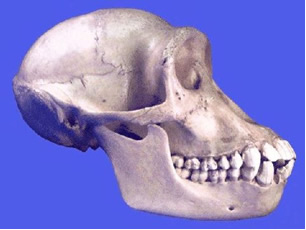
In the skull of a gorilla, superciliary arches are observed very strong, flattened occiput, zygoma extremely strong and a retropharyngeal area poorly developed, which leads away this kind of phonation. The dentition although humanoide has important differences.
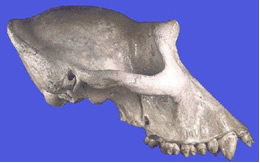
In this image of hominid, diastema is very notorious that exists for the placement of the upper canine in the inferior mandible or arcade, it also starting to show a curve of Spee or occlusion.
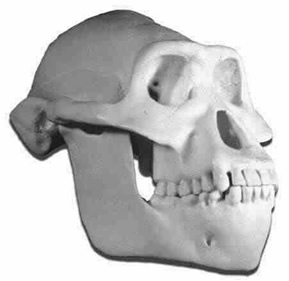
Side view of Homo erectus, may be observed an open process of frontalization, the occipital is convex, the superciliary arches are still strong, the bi-maxillary prognathism has almost disappeared and it is important to mention that the rhino-pharyngeal concavity is sufficient to y begin the process of phonation, previous incisors are observed only with anatomy very similar to the contemporary.
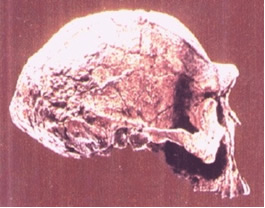
Homo skillfull. The process of frontalization is straightforward, the convexity of glabella (frontal bossing) to the external occipital protuberance is remarkable, superciliary arches tend to be smooth .
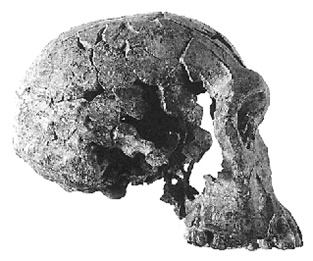
In the next graphic representation we note the brain capacity of Homo Sapiens, which currently has an average of 1,100 cc for men and 950 d.c. for women in average, note that the frontal process and chin are well developed, physiologically has shown that frontal lobe development in humans has influenced in the the process of emotions and affections. Also notice how the spinal column articulates with the occipital foramen Agnum in a completely perpendicular way to the floor, thanks to the double curvature of the spine.
In the chimpanzee and lemur there is no frontal curvature, presents bimaxillary prognathism, the brain is proportionately smaller in terms of total head volume and the angle of articulation of the spine is posterior to the foramen magnum.
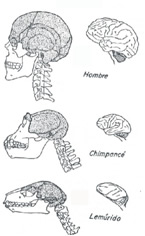
For obvious reasons, we must consider that evolution has not stopped and the most reliable sample is in how often we see congenital absence of third molars, upper lateral incisors and premolars, before this we ask: Which will be the human phenotype in the coming years?

Dr. Alfonso Peña Madero
Cirujano Maxilofacial.



